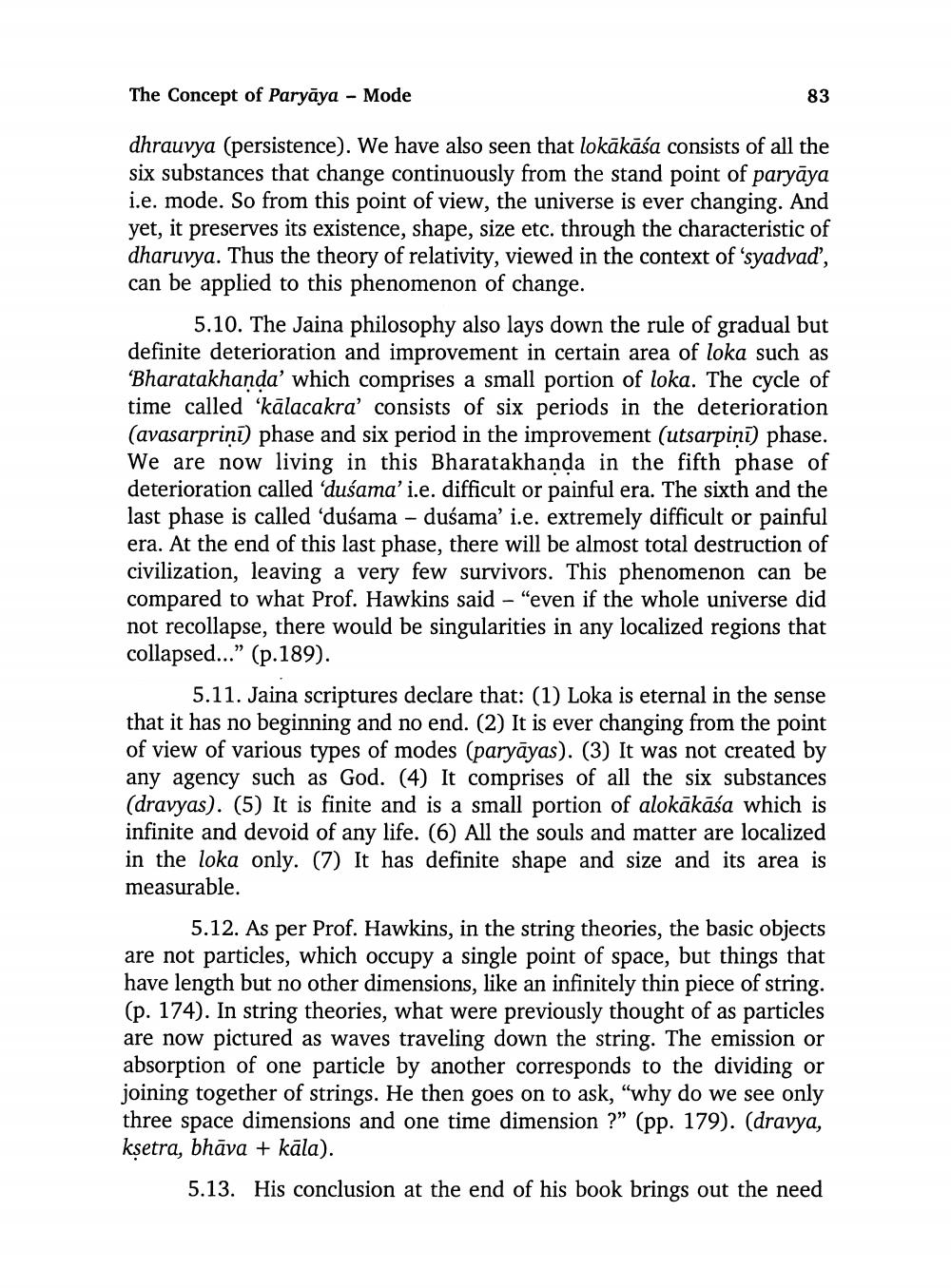________________ The Concept of Paryaya - Mode 83 dhrauvya (persistence). We have also seen that lokakasa consists of all the six substances that change continuously from the stand point of paryaya i.e. mode. So from this point of view, the universe is ever changing. And yet, it preserves its existence, shape, size etc. through the characteristic of dharuvya. Thus the theory of relativity, viewed in the context of 'syadvad', can be applied to this phenomenon of change. 5.10. The Jaina philosophy also lays down the rule of gradual but definite deterioration and improvement in certain area of loka such as 'Bharatakhanda' which comprises a small portion of loka. The cycle of time called "kalacakra' consists of six periods in the deterioration (avasarprini) phase and six period in the improvement (utsarpini) phase. We are now living in this Bharatakhanda in the fifth phase of deterioration called 'dusama' i.e. difficult or painful era. The sixth and the last phase is called 'dusama - dusama' i.e. extremely difficult or painful era. At the end of this last phase, there will be almost total destruction of civilization, leaving a very few survivors. This phenomenon can be compared to what Prof. Hawkins said - "even if the whole universe did not recollapse, there would be singularities in any localized regions that collapsed..." (p.189). 5.11. Jaina scriptures declare that: (1) Loka is eternal in the sense that it has no beginning and no end. (2) It is ever changing from the point of view of various types of modes (paryayas). (3) It was not created by any agency such as God. (4) It comprises of all the six substances (dravyas). (5) It is finite and is a small portion of alokakasa which is infinite and devoid of any life. (6) All the souls and matter are localized in the loka only. (7) It has definite shape and size and its area is measurable. 5.12. As per Prof. Hawkins, in the string theories, the basic objects are not particles, which occupy a single point of space, but things that have length but no other dimensions, like an infinitely thin piece of string. (p. 174). In string theories, what were previously thought of as particles are now pictured as waves traveling down the string. The emission or absorption of one particle by another corresponds to the dividing or joining together of strings. He then goes on to ask, "why do we see only three space dimensions and one time dimension ?" (pp. 179). (dravya, ksetra, bhava + kala). 5.13. His conclusion at the end of his book brings out the need




